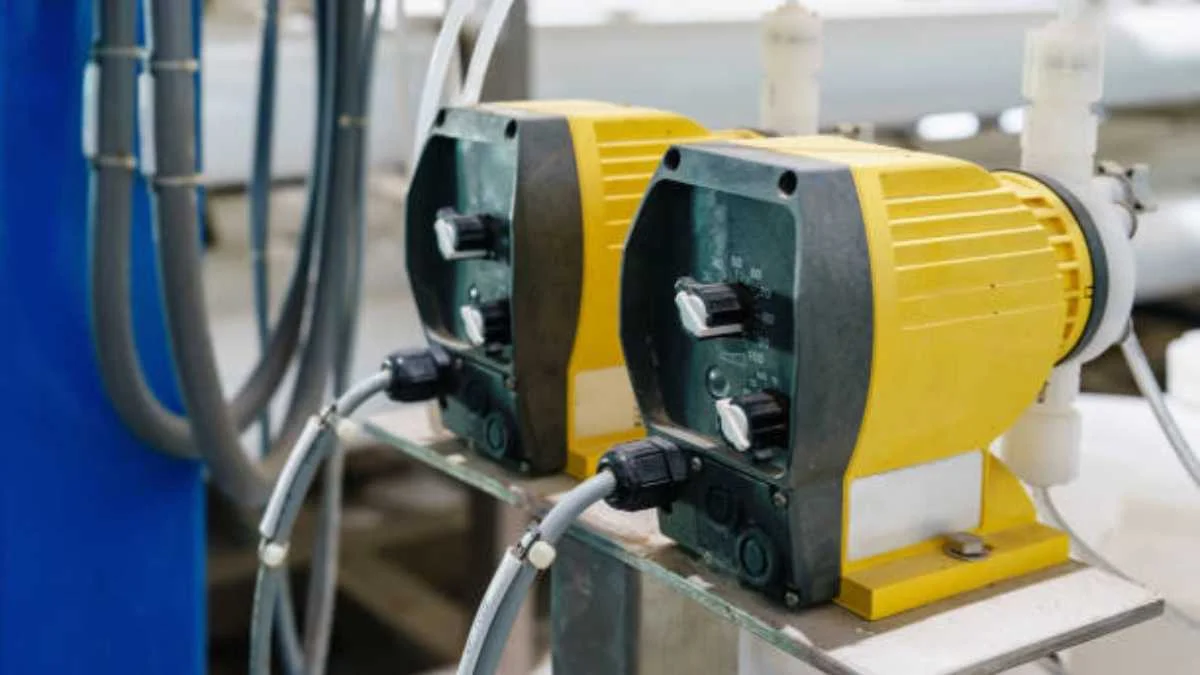BUSINESS
Enhancing Operational Efficiency: The Role of Chemical Dosing Pumps in Modern Industries

Let’s be honest — when we think about the machines and tools that keep the world running, chemical dosing pumps aren’t exactly top of mind. They’re not shiny. They don’t have cool names. And they don’t get the attention that giant engines or robotic arms do.
But here’s the thing: chemical dosing pumps are kind of a big deal.
They might be small and quiet, but they’re doing some seriously important work behind the scenes, helping everything from water treatment plants to farms, food factories, and even breweries run safely, smoothly, and efficiently.
What is a chemical dosing pump?
Think of it like a super-precise little pump that adds just the right amount of chemicals to a system. Kind of like how you add salt “to taste” when cooking, except this is science, not spaghetti.
It could be adding chlorine to water, nutrients to crops, or cleaning agents to a food production line. The goal? Accuracy. Consistency. No mess, no waste, no surprises.
Because in industrial settings, too much or too little of anything (even something good) can cause major problems—contamination, equipment damage, regulatory violations, or just plain inefficiency.
So why does this matter?
1. They save money. A lot of money.
Overdosing chemicals is like pouring dollars down the drain—literally. These pumps make sure you’re using exactly what you need and not a drop more. No guesswork. No waste.
2. They keep things safe.
Whether it’s drinking water or a jar of pickles, the chemical levels have to be just right. Dosing pumps help hit those marks every single time, which keeps people safe and businesses compliant with regulations.
3. They just work.
Once they’re set up, they do their job quietly in the background. No drama. No constant tinkering. Just clean, consistent performance.
And the best part? With modern tech, many of today’s pumps are smart. We’re talking digital controls, remote monitoring, real-time alerts—like having a mini chemical engineer on call 24/7.
Companies like Blue-White are making some of the most advanced dosing pumps out there, with features that make them user-friendly and reliable.
Where are these pumps actually used?
Short answer: pretty much everywhere. But here are a few places where they shine:
- Water treatment facilities – They help make sure your tap water is clean and safe to drink. No over-chlorination, no weird tastes, no health hazards.
- Food & beverage production – Whether it’s sanitizing equipment or adding preservatives, dosing pumps keep things clean and consistent without ruining the flavor or breaking safety rules.
- Farms and greenhouses – Farmers use them to feed crops through irrigation systems (aka “fertigation”). The result? Healthier plants, less runoff, better harvests.
- Chemical manufacturing – In plants where precision is everything, these pumps help maintain balance and avoid costly mix-ups or dangerous chemical reactions.
The future of dosing: smarter, safer, better
If you’re picturing a basic little motor with a hose attached, think again. The new generation of chemical dosing pumps is seriously impressive.
Take Blue-White’s FLEXFLO® or CHEM-FEED® lines, for example. These pumps are built to handle tough environments, but they’re also packed with smart features—flow sensors, leak detection, even compatibility with SCADA systems. Translation: you always know what’s going on, and if something’s off, you’ll get a heads-up before it becomes a problem.
It’s all about giving teams more control, more insight, and way fewer headaches.
Bottom line? They’re underrated heroes.
Chemical dosing pumps won’t win any design awards. They’re not flashy or loud. But they are one of the most important tools for keeping modern industries efficient, clean, and safe.
They help save money, reduce waste, and make people’s jobs easier while quietly doing their job in the background. Kind of like a great teammate who doesn’t need the spotlight but shows up every day and gets the work done right.
So the next time you pour a glass of water, eat a salad, or turn on the tap without worrying about what’s coming out of it—just know there’s probably a chemical dosing pump working somewhere nearby, doing its job drop by drop.
And honestly? It deserves a little credit.
-

 BIOGRAPHY8 months ago
BIOGRAPHY8 months agoBehind the Scenes with Sandra Orlow: An Exclusive Interview
-

 HOME1 year ago
HOME1 year agoDiscovering Insights: A Deep Dive into the //vital-mag.net blog
-

 HOME1 year ago
HOME1 year agoSifangds in Action: Real-Life Applications and Success Stories
-

 BIOGRAPHY1 year ago
BIOGRAPHY1 year agoThe Woman Behind the Comedian: Meet Andrew Santino Wife




























